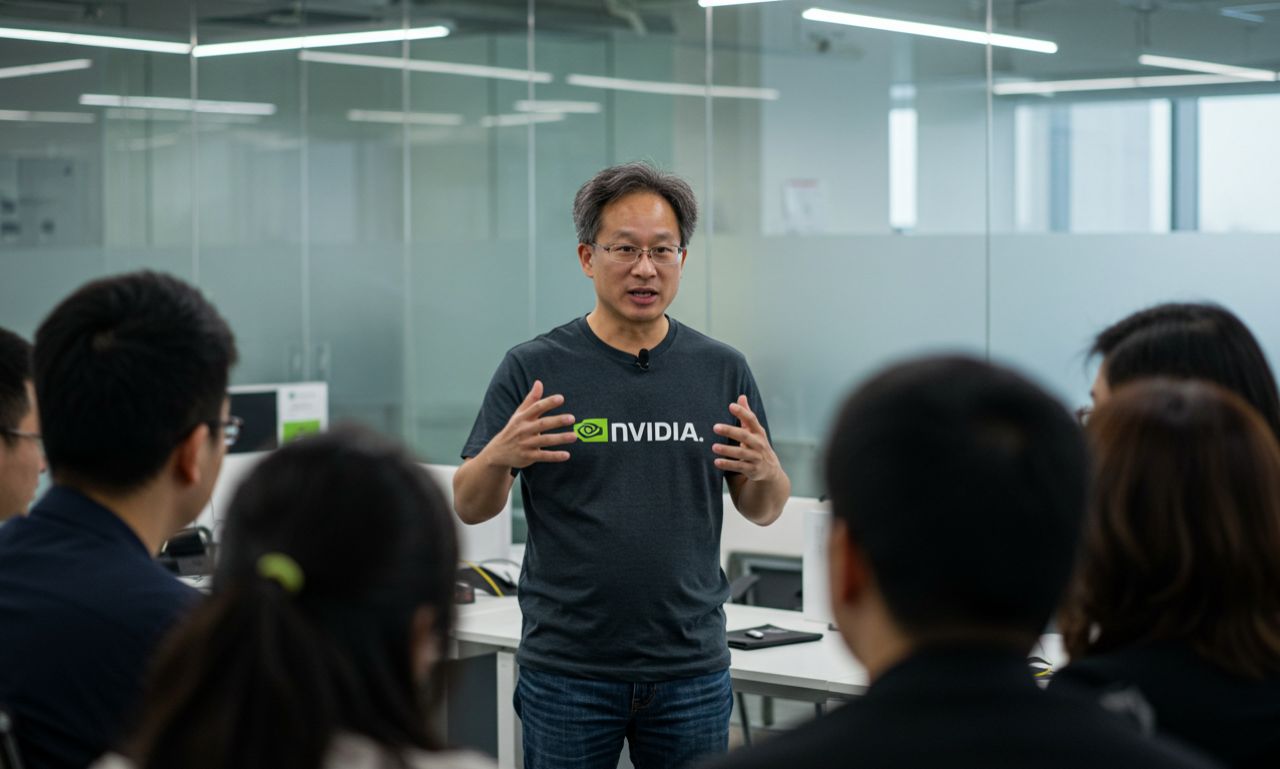Nvidia CEO Jensen Huang’s recent high-profile visit to Beijing has sent ripples through the global tech industry. At a time when U.S.-China technology tensions remain at historic highs, Huang’s effusive praise for China’s innovation ecosystem (“China’s full-stack AI capabilities are extraordinary”) presents a fascinating case study in geopolitical tech diplomacy.
The semiconductor titan’s carefully calibrated remarks come as Nvidia walks a tightrope – striving to maintain its critical Chinese market share (representing 20-25% of revenue) while complying with increasingly strict U.S. export controls. Industry analysts view Huang’s speech as both a genuine acknowledgment of China’s rapid progress in AI infrastructure and a strategic move to safeguard Nvidia’s position in the world’s largest semiconductor market.
This analysis will unpack the key messages from Huang’s visit, examine Nvidia’s delicate balancing act, and explore what this means for the ongoing U.S.-China tech competition.Key Highlights from Nvidia CEO’s Beijing Speech
Speaking to an audience of Chinese tech executives and government officials at Beijing’s Zhongguancun Forum, Huang delivered remarks that notably emphasized collaboration over competition. “The pace of innovation here is breathtaking,” Huang stated, specifically praising China’s advances in generative AI applications and smart manufacturing.
Several strategic themes emerged:
-
AI Ecosystem Growth: Huang highlighted China’s “comprehensive AI stack” from chips to applications
-
Talent Development: Commended Chinese universities for producing “world-class engineering talent”
-
Industry Partnerships: Noted Nvidia’s 15-year history of working with Chinese tech firms
The venue choice itself carried significance – Zhongguancun is China’s answer to Silicon Valley, home to many of the country’s semiconductor and AI startups. Huang’s appearance alongside Chinese tech leaders sent a clear message about Nvidia’s commitment to the market.
Why China? Nvidia’s Strategic Imperatives
Behind Huang’s diplomatic language lies hard commercial reality. Despite U.S. restrictions, China remains indispensable to Nvidia’s business:
-
Revenue Dependency:
-
Q2 2024 filings show China/Hong Kong accounted for 22% of Nvidia’s $26B revenue
-
Over 50% of Nvidia’s data center segment comes from Asia-Pacific
-
-
Strategic Partnerships:
-
Alibaba, Tencent and Baidu all rely on Nvidia chips for cloud AI services
-
EV makers like BYD use Nvidia Drive platforms for autonomous vehicles
-
-
Competition Concerns:
-
Huawei’s Ascend 910B chip now achieves 80% of A100 performance (Bernstein analysis)
-
Local alternatives from Biren and Moore Threads gaining traction
-
“China’s market is simply too large to abandon,” notes TechInsights analyst Dan Hutcheson. “But with each new export control, Nvidia’s runway gets shorter.”
Industry and Government Reactions
The response to Huang’s visit revealed competing narratives:
Chinese Tech Ministry:
“We welcome global enterprises like Nvidia to share in China’s digital development” – MIIT statement
U.S. Commerce Department:
“We remain vigilant about sensitive technology transfers” – Anonymous official comment
Market Analysts:
“Nvidia is trying to buy time until China can fully substitute its chips,” says Bloomberg Intelligence’s Kunjan Sobhani. “The praise is real but so is the desperation.”
Notably, Huang avoided direct mention of U.S. export controls during his public remarks, focusing instead on technical collaboration areas still permitted under current regulations.The Geopolitical Tightrope: Navigating U.S. Controls
Nvidia’s China strategy has become increasingly complex:
Export Control Timeline:
| Year | Restriction Impact |
|---|---|
| 2022 | A100/H100 banned |
| 2023 | A800/H800 banned |
| 2024 | H20/L20/L2 created for China |
Current Challenges:
-
Performance gap: China-spec H20 offers just 50% of H100 capability
-
Local competition: Huawei now controls 15% of China’s AI chip market
-
Supply chain risks: TSMC manufacturing constraints affect all players
“Nvidia is playing 4D chess,” says CSIS technology expert James Lewis. “They’re trying to keep revenue flowing while preparing for the inevitable decoupling.”
What’s Next for Nvidia in China?
Several developments suggest Nvidia’s China strategy is evolving:
-
Localized Products:
-
New “L20” chips specifically designed for Chinese cloud providers
-
Automotive chips with reduced AI capabilities
-
-
R&D Investments:
-
Expanding Shanghai and Beijing engineering centers
-
Joint AI lab with Tsinghua University
-
-
Long-Term Calculus:
-
Most analysts give Nvidia 2-3 years before local alternatives dominate
-
Focus shifting to “non-sanctioned” areas like gaming and automotive chips
-
As Huang himself noted in Beijing: “The future of computing will be written across all markets.” The question remains how large Nvidia’s chapter in China will ultimately be.
Conclusion: Compliment as Strategy
Jensen Huang’s Beijing praise reflects both genuine respect for China’s tech progress and cold commercial calculation. While Nvidia continues to innovate workarounds to U.S. export controls, the walls are closing in on its China business model.
The coming years will test whether Nvidia can maintain its technological edge while satisfying competing geopolitical demands. For now, Huang’s carefully crafted compliments keep doors open – but everyone in Zhongguancun knows the clock is ticking.

